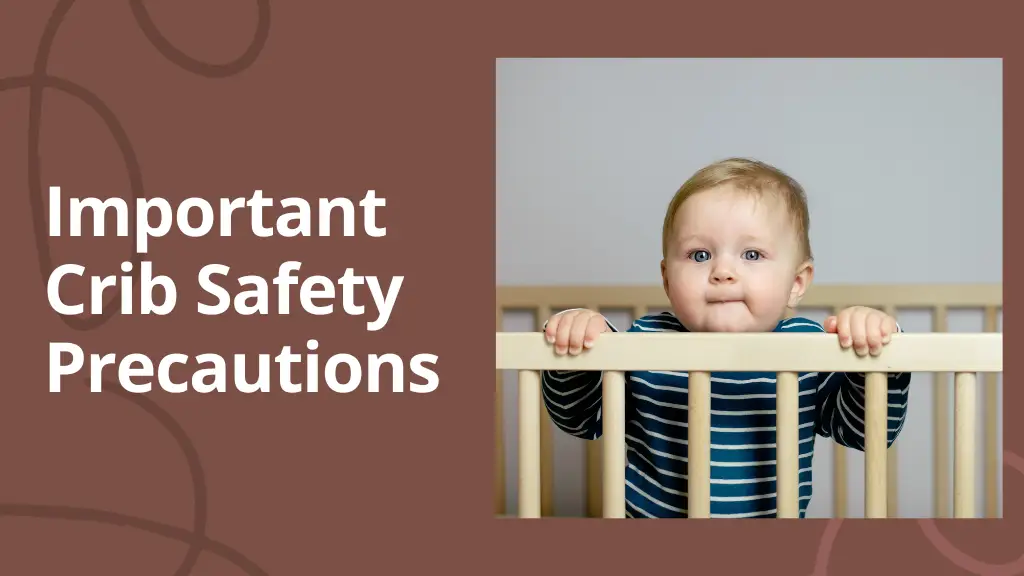Introduction
Welcoming a new member into your circle of relatives is an exciting and joyous event. As parents, ensuring the safety and well-being of your infant is your utmost precedence. One of the places wherein your child spends the most quantity of time is their crib. Here, we discuss baby cribs safety precautions that every parent should be aware of to create a secure dozing environment for his or her baby.
Choose the Right Crib
Safety should be your top concern while choosing a crib for your child. Especially when yourtoddler is not ready for a bed. Every parent should look for cribs that meet the latest safety standards. Ensure the slats are no wider than 2 3/8 inches apart to prevent your baby’s head from getting stuck.
Mattress Matters
Invest in a firm mattress that fits snugly inside the crib. Avoid soft bedding, pillows, and bumper pads. These items can pose suffocation risks. A tight-fitted crib sheet is all you need to keep your baby comfortable.
Proper Crib Placement
Place the crib away from windows, blinds, and curtains. Your little one might get entangled in cords, leading to accidents. Additionally, keep the crib away from radiators, heaters, or any electrical outlets to prevent burns and electric shocks.
Regularly Check for Wear and Tear
Inspect the crib regularly for any signs of wear and tear. Loose screws or cracked wood can make the crib unstable and unsafe. If you notice any damage, refrain from using the crib until it’s repaired properly.
Say No to Toys and Pillows
While it might be tempting to beautify your child’s crib with lovable filled animals and toys, it’s first-rate to keep the crib free from such toys. These can pose choking dangers or maybe cause suffocation if your baby buries their face in them.
Monitor the Crib’s Height
As your baby grows, adjust the crib mattress to its lowest position. This prevents adventurous toddlers from climbing out and risking a fall. It’s essential to do this as soon as your baby starts showing signs of pulling themselves up.
Use a Baby Monitor
Investing in a very good first-class baby screen permits you to maintain an ear out in your toddler, ensuring they may be secure even while you aren’t in the room. Choose a display with video abilities for an added layer of security.
Avoid Loose Clothing
Dress your baby in sleepers without hoods or strings. Loose clothing can lead to suffocation if it covers your baby’s face during sleep. Opt for sleep sacks or wearable blankets to keep your baby warm without the risk of suffocation.
No Co-Sleeping
While co-sleeping may appear to be a convenient choice, it drastically increases the chance of Sudden Infant Death Syndrome (SIDS). Always locate your baby in their crib, bassinet, or cradle to sleep, ensuring they have a safe dozing space of their very own.
Maintain a Comfortable Room Temperature
Keep the room where your baby sleeps at a comfortable temperature, ideally between 68 and 72 degrees Fahrenheit. Use a sleep sack or swaddle to keep your baby warm without the need for loose blankets, which can cover their face and obstruct breathing.
Regularly Clean the Crib
Maintain an easy drowsing environment for your infant. Regularly wipe down the crib with a humid fabric to remove dirt and capability allergens. A clean crib promotes a healthful slumbering surroundings in your baby.
FAQs
1) Can I use a 2nd-hand crib for my toddler?
While it is probably cost-effective, it is more secure to buy a brand new crib to make sure it meets current protection standards and hasn’t undergone put on and tear.
2) Is it vital to use a crib bumper?
No, crib bumpers are not advocated as they pose a suffocation danger and increase the chance of SIDS.
3) How regularly do I need to clean the crib mattress?
Clean the crib mattress each few months or right now if there’s a spill. Use a slight soap and water answer for cleaning.
4) Can my baby sleep with a pacifier within the crib?
Yes, the use of a pacifier throughout sleep can lessen the threat of SIDS. However, make certain it’s clean and would not have any unfastened elements.
5) When should I transition my baby from a crib to a bed?
Transition to an infant mattress while your baby starts off evolved displaying symptoms of hiking out or when they reach the peak restrict exact via the crib producer.
Final Words
Prioritising crib safety is important for each decision. By choosing the right crib, mattress, and keeping a secure sleeping environment, you offer your infant the safety they need to sleep soundly.
Remember to frequently inspect the crib for any signs and symptoms of damage and tear, keep away from unfastened bedding and toys, and constantly locate your infant on their return to sleep.
Following these critical crib protection precautions ensures your toddler’s protection and offers you peace of thoughts.




